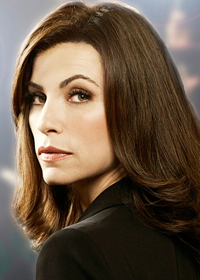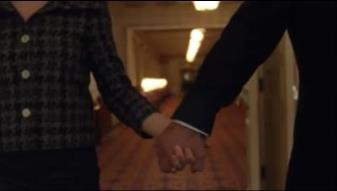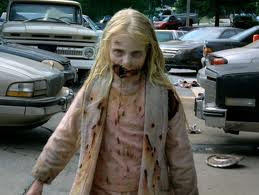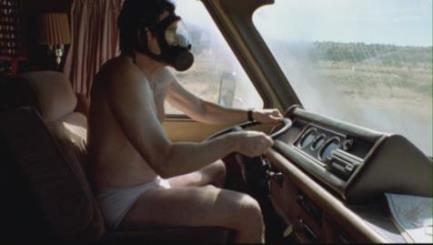4 Great TV Pilot Openings (The Good Wife, Downton Abbey, The Walking Dead, Breaking Bad)

It’s Fall TV season and there are way too many new shows vying for only a few open spots in network schedules. You’re flipping channels, hoping to find a winner, but also itching to boot up your Netflix queue, where you know you’ll find proven content. You find a candidate. A brand-spanking new series. A newborn, hoping to find millions of loving parents in the 18-35 demographic.
How long do you give it to win you over, to win a slot in your coveted shows list?
Me? Sometimes only 10 seconds. If a show is lucky, I’ll give it to the end of the Teaser or Cold Open, which usually coincides with the titles sequence or the first commercial break (if it’s an ad-supported network). If I’m bored, angered, offended, I will probably never tune into this show again (if it makes it, that is).
Yes, I’m brutal. But with so many great shows out there, I can’t afford to waste time on a new series. I mean, this could become a 5-10 year relationship. That’s a big commitment!
Now imagine the reader at the network who just started reading your original pilot script shares my lack of patience. The clock is ticking. You know what you have to do.
You must suck in the reader with a well-crafted opening that shows them the look and feel of your unique world, defines your protagonist in action, and establishes a fascinating Central Dramatic Question to give the story a sense of mystery, urgency and momentum. Perhaps most importantly, these first few pages need to show the reader why they should care about these particular people in this place and this time.
In TV, the beginning of a script is referred to as a “Cold Open” or “Teaser,” because we are thrown into the action of the story, our interest is piqued, and we are left with a wanting for more. Usually, “Cold Open” applies to 30-minute sitcoms and “Teaser” is used by one-hour dramas. Let’s focus on dramas for now.
What attributes must your Teaser have to be effective?
Your Teaser must draw in the viewer with dynamic images, a strong sense of place, time and tone, and an expression of the central theme of the series. Ideally, there is movement of some kind to inject a sense of energy and forward propulsion in the narrative…leading to a surprising discovery. Let’s look at three memorable opening sequences:
In The Good Wife, we open on the image of a husband and wife’s hands joined. In a tracking shot, we follow their hands as they enter a room filled with news photographers. Their hands separate as flash-bulbs explode, leading us to a press conference where the husband defends allegations of impropriety and the wife bristles at the thought of his affair. This “Teaser” ends with the wife slapping the husband and walking away from him. The partnership has dissolved and she is now utterly alone. What does she do now? How will she start over?
In Downton Abbey, we follow the servants of the manor in an unbroken Steadicam shot. As they do their jobs, we tour the opulent rooms of the mansion, perfectly establishing the time period and aristocratic tone. Meanwhile, we cross-cut to a teletype machine receiving a dramatic message and the morning paper spreading the news throughout the house. We will soon find out that The Titanic has just sunk, killing the rightful heir to the Abbey. This is the catalyst that kicks the first season into motion.
In The Walking Dead, we meet our hero, Sheriff Rick Grimes, as he searches for gasoline amidst what looks to be a post-apocalyptic wasteland. We don’t yet know why he seems to be the only living person around; he seems just as confused as we are. It’s a familiar dramatic scenario, so we’re looking to see what sets this story apart from the cliché-ridden hosts of its genre brethren. When Rick spots a little girl from behind and calls out to her, she turns around to reveal she’s a zombie. She shuffles toward him, hungry for flesh, and Rick is forced to pull his gun and take his first zombie casualty – we immediately understand that this is a show about the terrible decisions made to maintain one’s humanity when society breaks down. This will be the emotional throughline of the series.
Cue cool opening titles sequence!
Breaking Bad’s pilot begins with a crazy scene where we meet Walter White (introduced as “Underwear Man” in Vince Gilligan’s teleplay) as he drives an RV like a bat out of hell, and after he crashes it in the desert, he gets out and records a first-person message into a video camera to his family, Skyler and Walter, Jr. “No matter how it may look, I only had you in my heart,” Walter says. He then pulls a gun and tries to take his own life, but fails. When he hears the sound of approaching sirens, he points the gun in that direction, seemingly readying himself for a firefight with police. We won’t see the outcome of this sequence until much later in the episode. By opening on this mysterious yet obviously dangerous and high stakes moment, Vince Gilligan not only sucks us in with a killer Central Dramatic Question (Why is this dude in his underwear about to start shooting cops?) but he also establishes that this is a crime story, not just a domestic drama, and the stakes are life and death.
Cue short, but still cool opening titles sequence!
If you’d like to learn more about the structure of a TV pilot script, please join me for my webinar “The TV Pilot Beat Sheet: From ABC to AMC to HBO to Netflix” presented by The Writers Store.
Good luck and happy writing,
Dan Calvisi










Leave a Reply
Want to join the discussion?Feel free to contribute!